-
 Bitcoin
Bitcoin $106,754.6083
1.33% -
 Ethereum
Ethereum $2,625.8249
3.80% -
 Tether USDt
Tether USDt $1.0001
-0.03% -
 XRP
XRP $2.1891
1.67% -
 BNB
BNB $654.5220
0.66% -
 Solana
Solana $156.9428
7.28% -
 USDC
USDC $0.9998
0.00% -
 Dogecoin
Dogecoin $0.1780
1.14% -
 TRON
TRON $0.2706
-0.16% -
 Cardano
Cardano $0.6470
2.77% -
 Hyperliquid
Hyperliquid $44.6467
10.24% -
 Sui
Sui $3.1128
3.86% -
 Bitcoin Cash
Bitcoin Cash $455.7646
3.00% -
 Chainlink
Chainlink $13.6858
4.08% -
 UNUS SED LEO
UNUS SED LEO $9.2682
0.21% -
 Avalanche
Avalanche $19.7433
3.79% -
 Stellar
Stellar $0.2616
1.64% -
 Toncoin
Toncoin $3.0222
2.19% -
 Shiba Inu
Shiba Inu $0.0...01220
1.49% -
 Hedera
Hedera $0.1580
2.75% -
 Litecoin
Litecoin $87.4964
2.29% -
 Polkadot
Polkadot $3.8958
3.05% -
 Ethena USDe
Ethena USDe $1.0000
-0.04% -
 Monero
Monero $317.2263
0.26% -
 Bitget Token
Bitget Token $4.5985
1.68% -
 Dai
Dai $0.9999
0.00% -
 Pepe
Pepe $0.0...01140
2.44% -
 Uniswap
Uniswap $7.6065
5.29% -
 Pi
Pi $0.6042
-2.00% -
 Aave
Aave $289.6343
6.02%
How to generate the API key of Gate.io?
Generate Gate.io API keys carefully: log in, navigate to API settings, create and label keys, confirm identity, securely store keys, and manage permissions wisely.
Mar 28, 2025 at 04:35 am

Understanding Gate.io API Keys
Gate.io, like many cryptocurrency exchanges, provides an Application Programming Interface (API) allowing programmatic access to your account. This enables automated trading bots, custom trading dashboards, and other applications. However, accessing this functionality requires generating API keys, which act as your digital signature for authorizing these actions. These keys should be treated with the utmost care, as compromised keys grant complete control over your Gate.io account.
Step-by-Step Guide to Generating Gate.io API Keys
Generating your Gate.io API keys is a straightforward process, but requires careful attention to detail. Here's a step-by-step guide:
Log in to your Gate.io account: Ensure you're logged into your verified Gate.io account. Security is paramount, so use a strong and unique password.
Navigate to the API Management section: Locate the section dedicated to API management within your account settings. The exact location might vary slightly depending on Gate.io's interface updates, but it's typically under "Security" or a similarly named tab.
Create a new API key: Click on the button or link that allows you to generate a new API key pair. You'll typically be prompted to provide a label for your key, aiding in organization if you create multiple keys for different applications. Choose a descriptive and memorable label.
Confirm your identity: Gate.io will likely require secondary authentication, such as 2FA (Two-Factor Authentication) or email verification, to confirm the key generation request. This is a crucial security step.
Download or copy your API key and Secret key: Once the key is generated, you'll receive both an API key and a Secret key. Download these keys immediately and store them securely offline. Never share these keys with anyone. Treat them like your banking password.
Enable or disable API access: Gate.io might offer options to enable or disable specific API functionalities, such as trading or withdrawals. Review these settings carefully and only enable the functions your application requires.
Understanding API Key Security Best Practices
The security of your Gate.io API keys is critical. A compromised key could lead to significant financial losses. Here are some crucial security best practices:
Never share your API keys with anyone. This includes friends, family, and even seemingly trustworthy developers.
Store your API keys offline. Avoid storing them on your computer, mobile device, or any online service. Consider using a password manager with strong encryption.
Use strong and unique passwords for your Gate.io account and any applications using the API. Avoid reusing passwords across different platforms.
Regularly review your API key usage. If you notice any suspicious activity, immediately revoke your API keys and generate new ones.
Use different API keys for different applications. This limits the damage if one application's security is compromised.
Enable two-factor authentication (2FA) on your Gate.io account. This adds an extra layer of security, making it significantly harder for unauthorized users to access your account, even if they obtain your API keys.
Advanced API Usage Considerations
Gate.io's API offers various functionalities, each requiring specific permissions. Carefully review the documentation before enabling any permission. Understand the implications of each permission before granting access. Incorrectly configured permissions can lead to unintended consequences. Always test your API integration in a sandbox environment before deploying it to a live trading system. Thorough testing is essential to prevent unexpected behavior or errors. Regularly update your applications to incorporate security patches and address any vulnerabilities.
Frequently Asked Questions
Q: What happens if I lose my API keys?
A: If you lose your API keys, you'll need to revoke them and generate a new pair. This will effectively disable the previous keys, preventing further unauthorized access.
Q: Can I generate multiple API keys?
A: Yes, Gate.io allows you to generate multiple API keys. This is recommended for separating access for different applications or purposes.
Q: How do I revoke an API key?
A: The process for revoking an API key is usually found within the same API management section where you generated the key. Look for an option to disable or delete the specific key you want to revoke.
Q: What if I suspect my API key has been compromised?
A: Immediately revoke the compromised key and generate a new one. Change your Gate.io account password and enable or review your 2FA settings. Monitor your account activity closely for any further suspicious actions.
Q: Where can I find the Gate.io API documentation?
A: The official Gate.io website typically provides comprehensive API documentation, including details on endpoints, request methods, and rate limits. Refer to their official documentation for the most up-to-date information. Always verify the authenticity of the documentation source.
Q: Are there any limitations on the number of API keys I can generate?
A: Gate.io might have limitations on the number of active API keys per account. Check their documentation for any specific restrictions. If you need to manage many keys, consider a system for organizing and tracking them effectively.
Q: What type of encryption is used to protect my API keys?
A: Gate.io uses industry-standard security protocols to protect your API keys. The specific encryption methods are usually detailed in their security documentation. However, remember that the security of your keys also relies heavily on your own security practices.
Disclaimer:info@kdj.com
The information provided is not trading advice. kdj.com does not assume any responsibility for any investments made based on the information provided in this article. Cryptocurrencies are highly volatile and it is highly recommended that you invest with caution after thorough research!
If you believe that the content used on this website infringes your copyright, please contact us immediately (info@kdj.com) and we will delete it promptly.
- Riding the Solana Wave: Spot ETFs and Investment Opportunities
- 2025-06-18 22:45:12
- Hedera (HBAR) and 2030 Wealth: A Realistic Outlook
- 2025-06-18 23:05:12
- XRP Lawsuit: Settlement Hopes Rise with Bill Morgan's Insights
- 2025-06-18 23:22:17
- Solaxy Presale: Is This Crypto Explosion the Next Big Thing on Solana?
- 2025-06-18 22:25:13
- Alchemy Pay, Ripple, and RLUSD: A New Era for Crypto Payments?
- 2025-06-18 22:45:12
- QBI Token, AI Fintech, and Cloud Deployment: A New Era in Finance
- 2025-06-18 23:24:19
Related knowledge
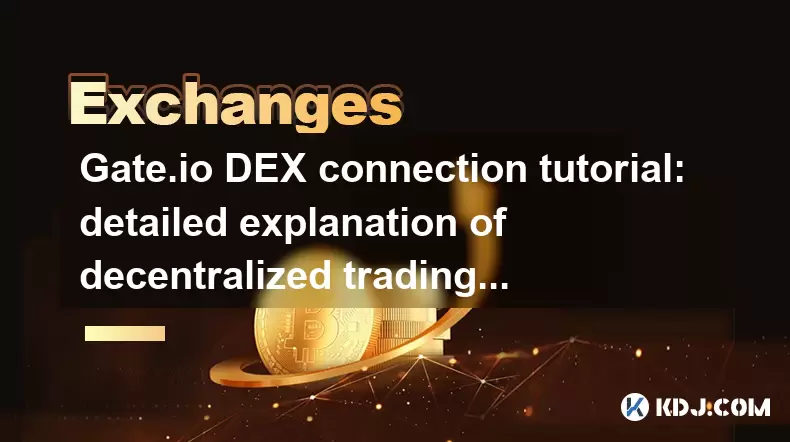
Gate.io DEX connection tutorial: detailed explanation of decentralized trading operation steps
Jun 12,2025 at 08:04pm
Connecting to Gate.io DEX: Understanding the BasicsBefore diving into the operational steps, it is crucial to understand what Gate.io DEX is and how it differs from centralized exchanges. Unlike traditional platforms where a central authority manages user funds and trades, Gate.io DEX operates on blockchain technology, allowing users to trade directly f...
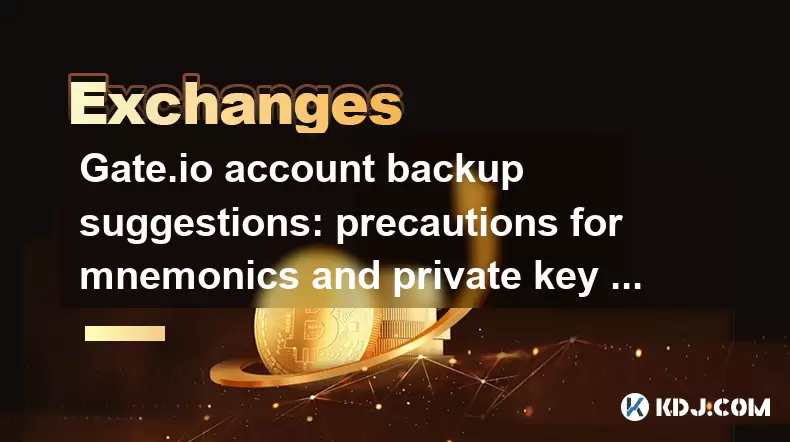
Gate.io account backup suggestions: precautions for mnemonics and private key storage
Jun 12,2025 at 10:56am
Understanding the Importance of Mnemonics and Private KeysIn the world of cryptocurrency, mnemonics and private keys are the core elements that grant users ownership over their digital assets. When using Gate.io or any other crypto exchange, understanding how to securely manage these components is crucial. A mnemonic phrase typically consists of 12 or 2...
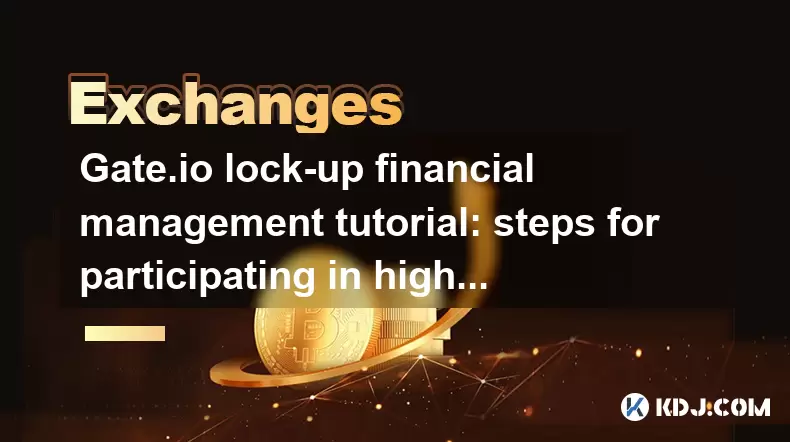
Gate.io lock-up financial management tutorial: steps for participating in high-yield projects and redemption
Jun 13,2025 at 12:43am
What Is Gate.io Lock-Up Financial Management?Gate.io is one of the world’s leading cryptocurrency exchanges, offering users a variety of financial products. Lock-up financial management refers to a type of investment product where users deposit their digital assets for a fixed period in exchange for interest or yield. These products are designed to prov...
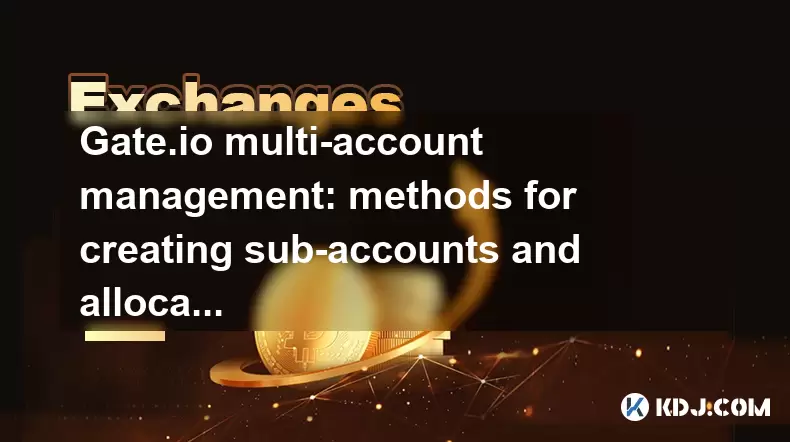
Gate.io multi-account management: methods for creating sub-accounts and allocating permissions
Jun 15,2025 at 03:42am
Creating Sub-Accounts on Gate.ioGate.io provides users with a robust multi-account management system that allows for the creation of sub-accounts under a main account. This feature is particularly useful for traders managing multiple portfolios or teams handling shared funds. To create a sub-account, log in to your Gate.io account and navigate to the 'S...
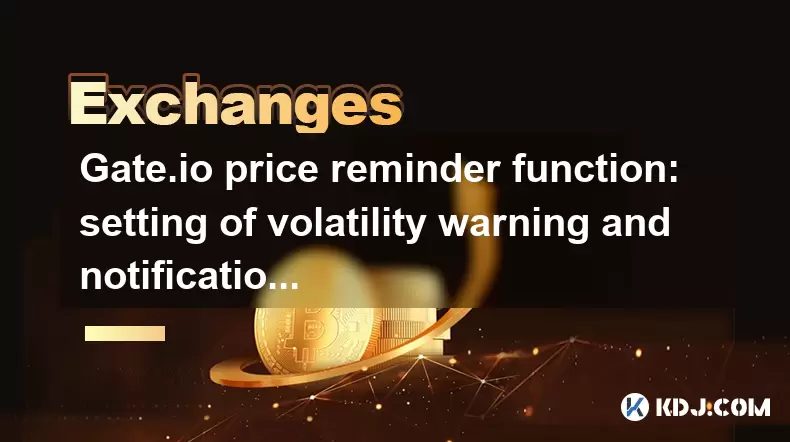
Gate.io price reminder function: setting of volatility warning and notification method
Jun 14,2025 at 06:35pm
What is the Gate.io Price Reminder Function?The Gate.io price reminder function allows users to set up custom price alerts for specific cryptocurrencies. This feature enables traders and investors to stay informed about significant price changes without constantly monitoring market data. Whether you're tracking a potential buy or sell opportunity, the p...

Gate.io trading pair management: tutorials on adding and deleting watchlists
Jun 16,2025 at 05:42am
What Is a Watchlist on Gate.io?A watchlist on Gate.io is a customizable feature that allows traders to monitor specific trading pairs without actively engaging in trades. This tool is particularly useful for users who want to track the performance of certain cryptocurrencies or trading pairs, such as BTC/USDT or ETH/BTC. By organizing frequently watched...

Gate.io DEX connection tutorial: detailed explanation of decentralized trading operation steps
Jun 12,2025 at 08:04pm
Connecting to Gate.io DEX: Understanding the BasicsBefore diving into the operational steps, it is crucial to understand what Gate.io DEX is and how it differs from centralized exchanges. Unlike traditional platforms where a central authority manages user funds and trades, Gate.io DEX operates on blockchain technology, allowing users to trade directly f...

Gate.io account backup suggestions: precautions for mnemonics and private key storage
Jun 12,2025 at 10:56am
Understanding the Importance of Mnemonics and Private KeysIn the world of cryptocurrency, mnemonics and private keys are the core elements that grant users ownership over their digital assets. When using Gate.io or any other crypto exchange, understanding how to securely manage these components is crucial. A mnemonic phrase typically consists of 12 or 2...

Gate.io lock-up financial management tutorial: steps for participating in high-yield projects and redemption
Jun 13,2025 at 12:43am
What Is Gate.io Lock-Up Financial Management?Gate.io is one of the world’s leading cryptocurrency exchanges, offering users a variety of financial products. Lock-up financial management refers to a type of investment product where users deposit their digital assets for a fixed period in exchange for interest or yield. These products are designed to prov...

Gate.io multi-account management: methods for creating sub-accounts and allocating permissions
Jun 15,2025 at 03:42am
Creating Sub-Accounts on Gate.ioGate.io provides users with a robust multi-account management system that allows for the creation of sub-accounts under a main account. This feature is particularly useful for traders managing multiple portfolios or teams handling shared funds. To create a sub-account, log in to your Gate.io account and navigate to the 'S...

Gate.io price reminder function: setting of volatility warning and notification method
Jun 14,2025 at 06:35pm
What is the Gate.io Price Reminder Function?The Gate.io price reminder function allows users to set up custom price alerts for specific cryptocurrencies. This feature enables traders and investors to stay informed about significant price changes without constantly monitoring market data. Whether you're tracking a potential buy or sell opportunity, the p...

Gate.io trading pair management: tutorials on adding and deleting watchlists
Jun 16,2025 at 05:42am
What Is a Watchlist on Gate.io?A watchlist on Gate.io is a customizable feature that allows traders to monitor specific trading pairs without actively engaging in trades. This tool is particularly useful for users who want to track the performance of certain cryptocurrencies or trading pairs, such as BTC/USDT or ETH/BTC. By organizing frequently watched...
See all articles

























































































